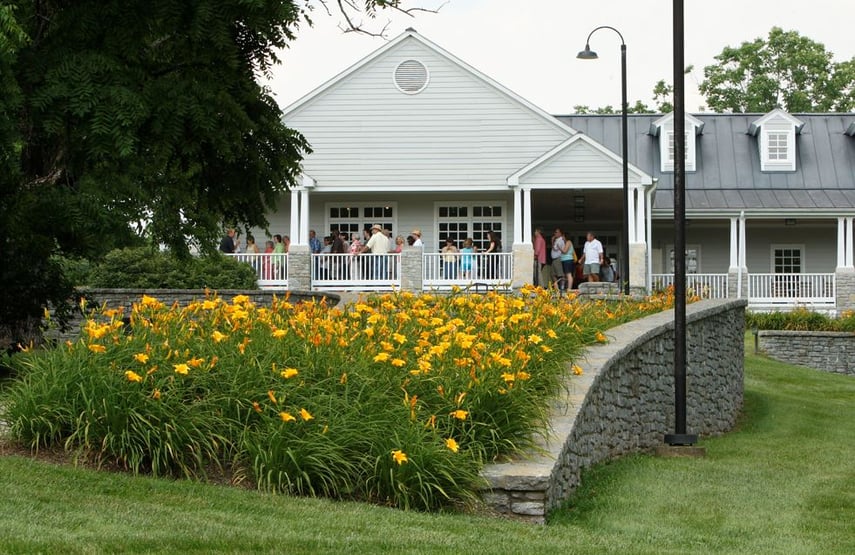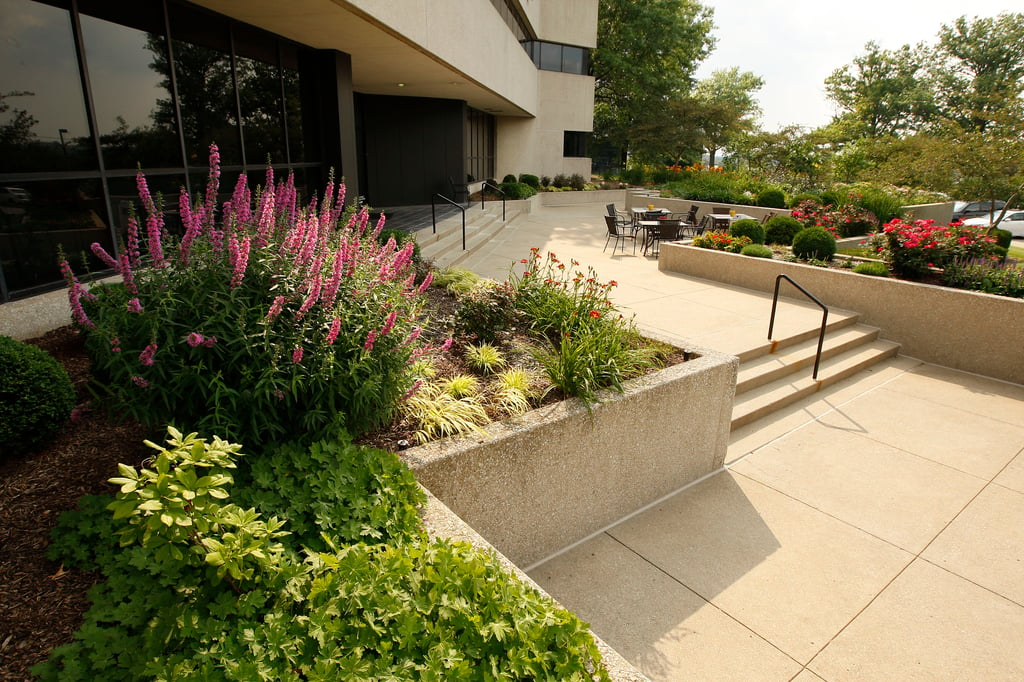Fall is that time when we hunker down over the next year’s budget and review expenses. We consider the tasks required to keep our grounds looking the way we expect. As you finalize your annual landscape maintenance budget, you’re probably wondering how you can stretch your dollars. Are you getting true value from your current provider? Are the results up to your standards? Ultimately, what exactly should you spend on landscape maintenance and how should you spend that budget?

We have some recommendations to guide you through the process. And, we think that knowing this budgeting theory will be enlightening. If you’re like us, you’ll think, “Aha! Yes…”
First, we’ll share with you a principle that can apply to every aspect of your business, including budgeting landscape maintenance. Then, we’ll offer some insight on how you can categorize your landscape spending so you’ll land on a budget that matches your vision. Ready to make sense of your annual budget for landscape maintenance? Then come along…
The Pareto Principle—Or Why 20% Of Your Spend Matters The Most
You might have heard of The Pareto Principle, otherwise known as the 80/20 Rule, when referring to a business’s customers. The principle states that 80% of your “results” come from 20% of the “causes.” So in the case of customers, 80% of your profits come from 20% of your customers.
When we think about budgeting landscape maintenance, the 80/20 Rule applies the same way: 80% of the results will come from that 20% of your spending.
(Really!) We realize this fact might surprise you. But think about it: Your landscape is alive and changing daily. Of course, you’ll be spending the most money (80%) on activities like mowing, edging, cleanup and pruning—landscape maintenance. But the 20% of “extras” make the difference. Your landscape is an ecosystem that needs to be managed, not just maintained. Its growth and development cannot be addressed through just maintenance like mowing and edging. You’ve got to do more to get more out of your landscape.
So, let’s take a look at your annual landscape budget and apply The Pareto Principle. Our recommendation is to spend 80% on landscape maintenance, and dedicate 20% to the following three categories:
- Environmental, Health & Safety (EHS): Includes pruning for visibility, removal of hazards, cleanup of storm damage and more
- Repairs & Replacements: Fixing vehicle ruts in lawns, replacing plants, repairing irrigation systems, etc.
- Landscape Enhancements: New design and planting, hardscape, splitting perennials, transplanting, etc.
Adjusting Your Landscape Budget Using The 80/20 Rule
What if you need to cut your budget this year? You might figure that the best way to do this is to eliminate the extras—forget landscape enhancements, and see if you can make do. We know that a lot of commercial property owners must make decisions about where to spend their landscape maintenance dollars, so unfortunately the first activities cut are those that make the biggest impact. Again, it’s back to that 20% that delivers 80% of the value.

We are not suggesting that you skimp on landscape maintenance and spend more on those other three categories. Instead, if you must adjust your landscape budget, keep that 80/20 Rule in mind and portion out the budget so you are still tending to safety, replacements and enhancements.
Get The Most Value From Your Landscape Budget
Remember, your landscape is an asset that you must care for in order to preserve its value. It’s a lot like a home. If all you do is clean a house regularly, ignore maintenance and do not perform upgrades, then its value will decrease over time. The same is true for your commercial property’s landscape. Paying only for maintenance will result in your property degrading over time because landscapes need care beyond mow-blow-and-go. And when you do invest in that 20%, you’ll get a return.
So, rather than thinking of the expense your landscape demands, consider the contributions the landscape makes toward reducing costs in areas like energy—or increasing occupancy, retail sales, and improving quality of life. See, that 20% is where you’ll really drive the landscape’s value.
Time To Budget—And Ask A Landscape Professional For Input
What areas of your Kentucky property need to be improved next year? Are there plants that are failing, or would a new hardscape space elevate visitors’ experience? Should you address stormwater issues, create a rain garden or deal with an aging irrigation system? Talk to your commercial landscape professional about what your property needs to retain its value. Ask for a property walk-through and identify areas of concern before you sit down to budget next year’s landscape maintenance.

Also, listen to your landscaper’s recommendations on how to best manage your site. They are the experts. We often find when scopes of service are written by those outside of the green industry that the results do not fully meet the needs of the landscape, so its health and quality rapidly decline.
You can budget wisely using the 80/20 Rule—The Pareto Principle.
What we love about budgeting time is it can feel like a New Years for your landscape. You get an opportunity to evaluate what you have, consider the possibilities, and get real about what landscape maintenance is necessary to make your property better. With the 80/20 Rule applied to budgeting, you can wisely allocate your landscape maintenance dollars to make room for activities that make a significant impact on how your landscape will look, function and grow into the future.
Let’s talk more. Call us any time at 859-254-0762, or fill out this simple contact form and we’ll get in touch with you.


